Special Trees
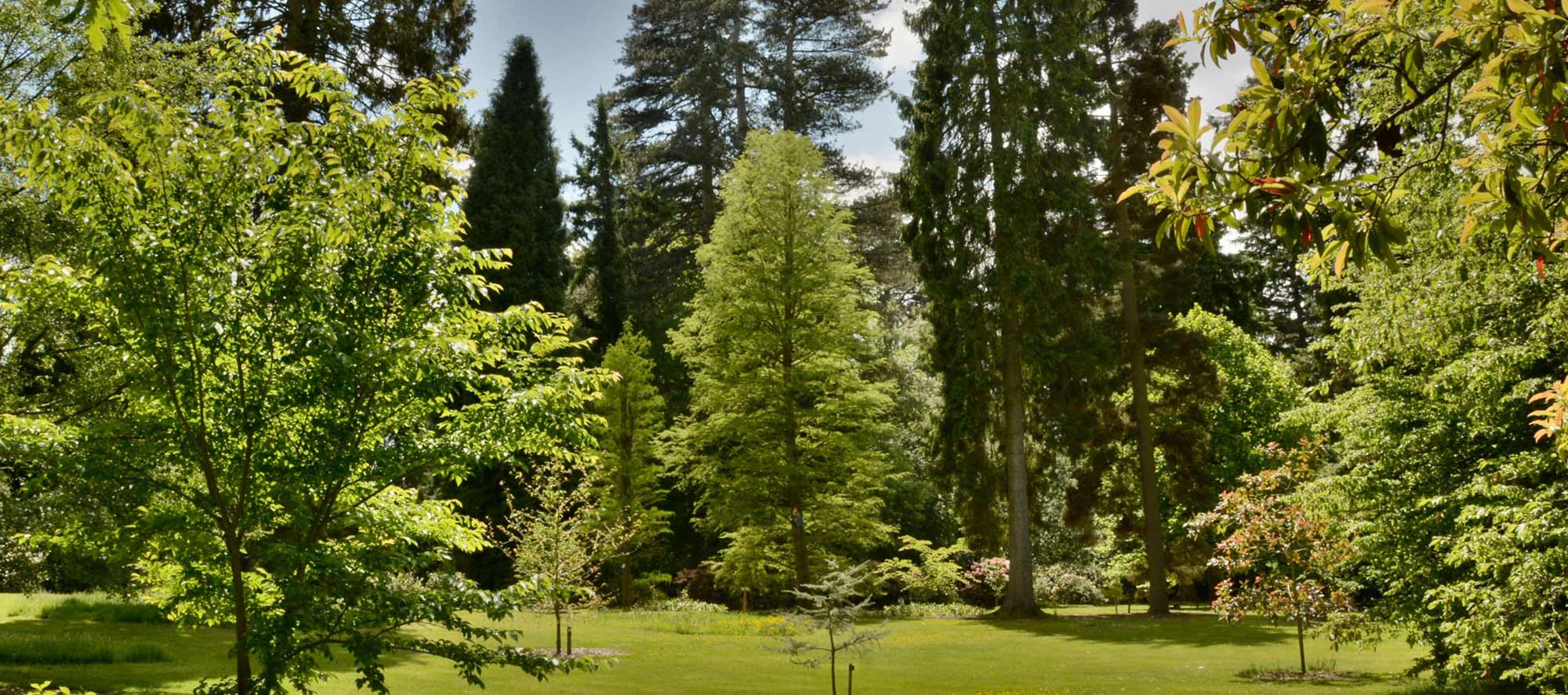
All trees are special in some way, but at Arley Arboretum there are some particularly interesting residents.
Arley Arboretum is home to some of the most stunning gardens found anywhere in the UK. These include our beautifully restored Italian Garden, the magical Magnolia Garden, our spectacular display of Rhododendrons and Azaleas, a fine collection of Acers and a selection of special tree species.
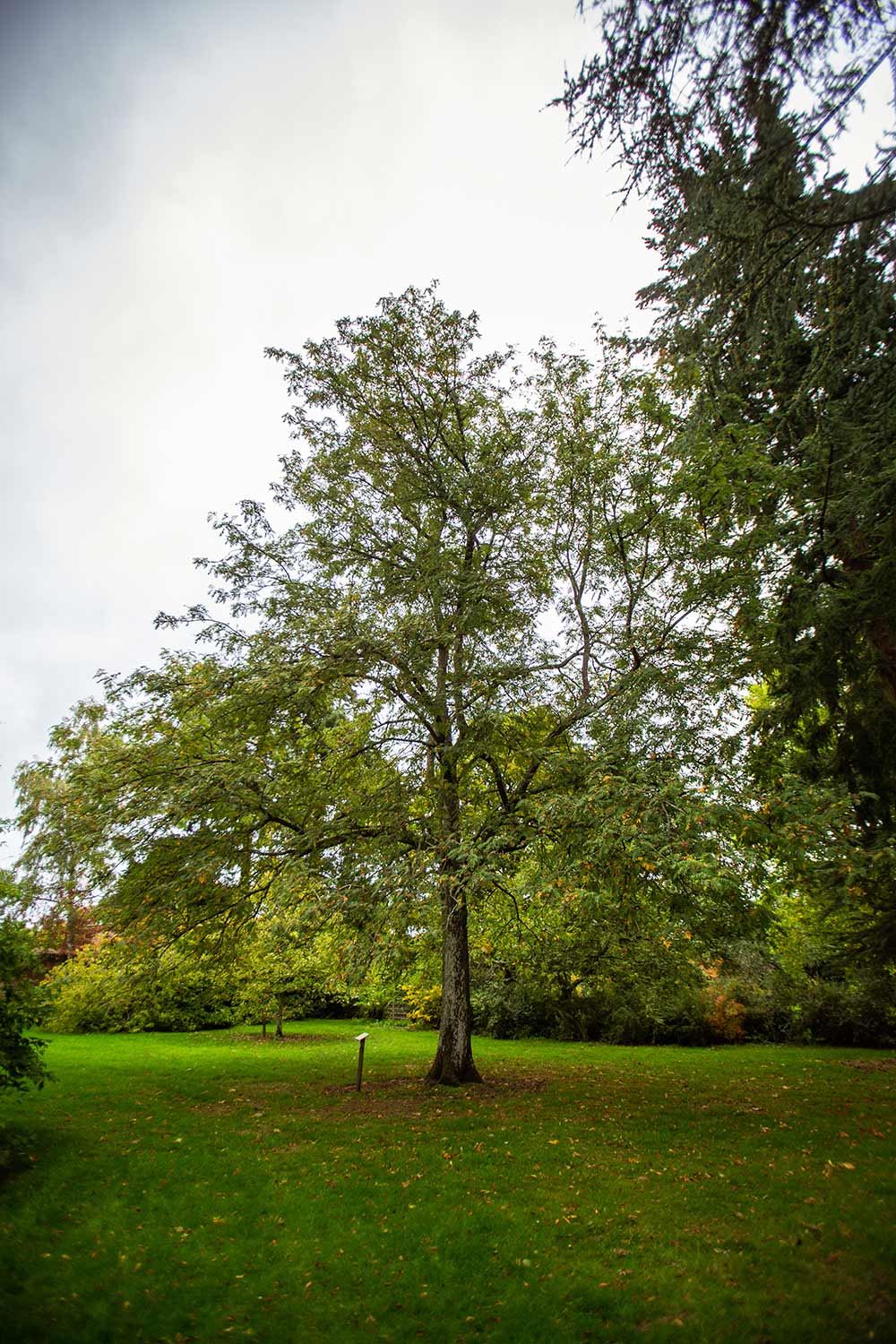
74. Whitty Pear (Sorbus Domestic, True Service)
- Thought to be brought in by the Romans, but now declared indigenous to Worcestershire, Shropshire, Wales, and in particular the Wyre Forest area
- Looks like a mountain Ash, but in fact it’s very rare!
- Tiny little apple/pear-shaped fruit in autumn, with leaves in summer

74. Whitty Pear (Sorbus Domestic, True Service)
- Thought to be brought in by the Romans, but now declared indigenous to Worcestershire, Shropshire, Wales, and in particular the Wyre Forest area
- Looks like a mountain Ash, but in fact it’s very rare!
- Tiny little apple/pear-shaped fruit in autumn, with leaves in summer
78. Maidenhair Tree (Ginkgo Biloba)
- Planted around 1820 (One of the first here)
- Rare in the Lebanon
- Evergreen
- Loses branches when it snows, as the branches hold huge layers of snow
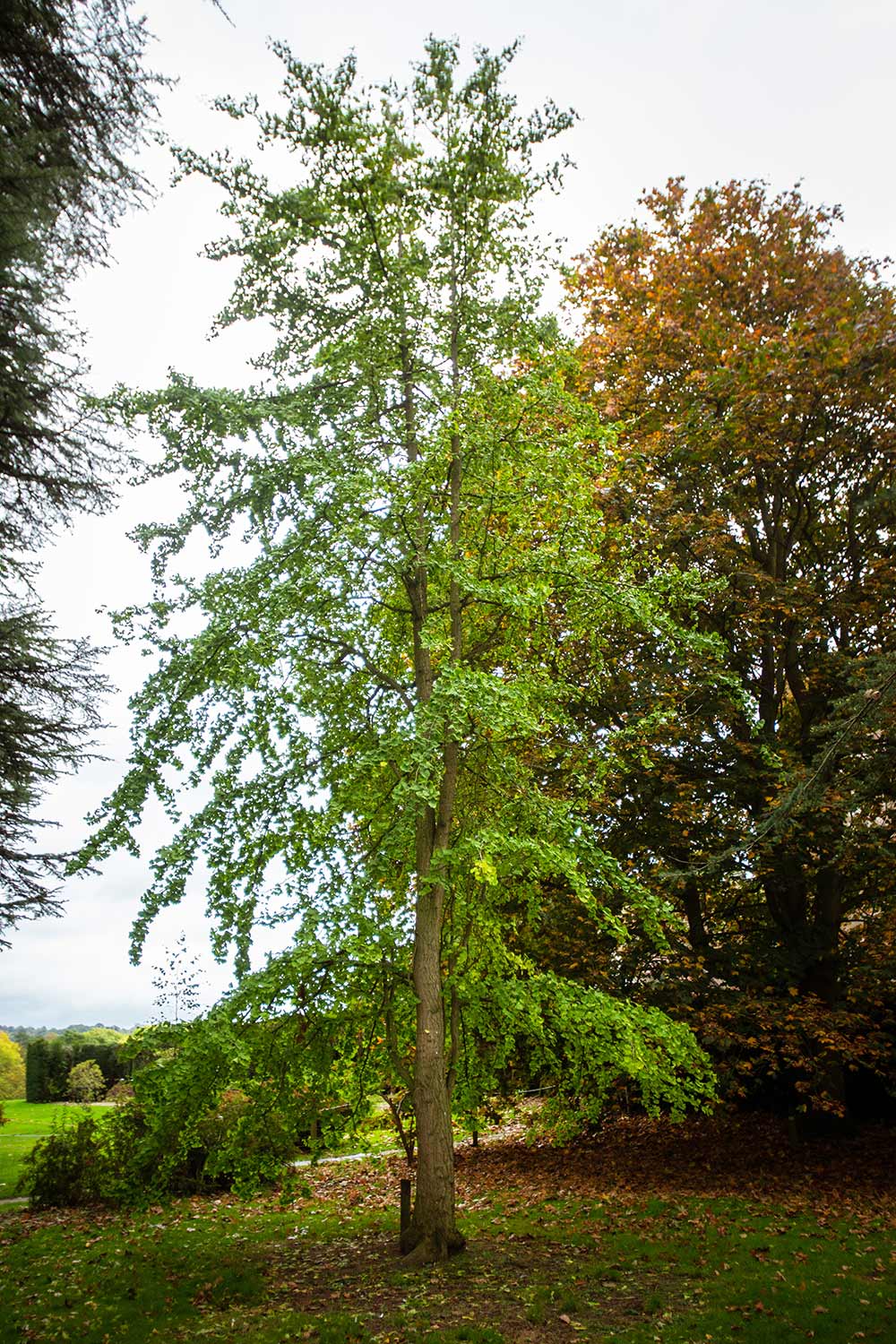

78. Maidenhair Tree (Ginkgo Biloba)
- Planted around 1820 (One of the first here)
- Rare in the Lebanon
- Evergreen
- Loses branches when it snows, as the branches hold huge layers of snow
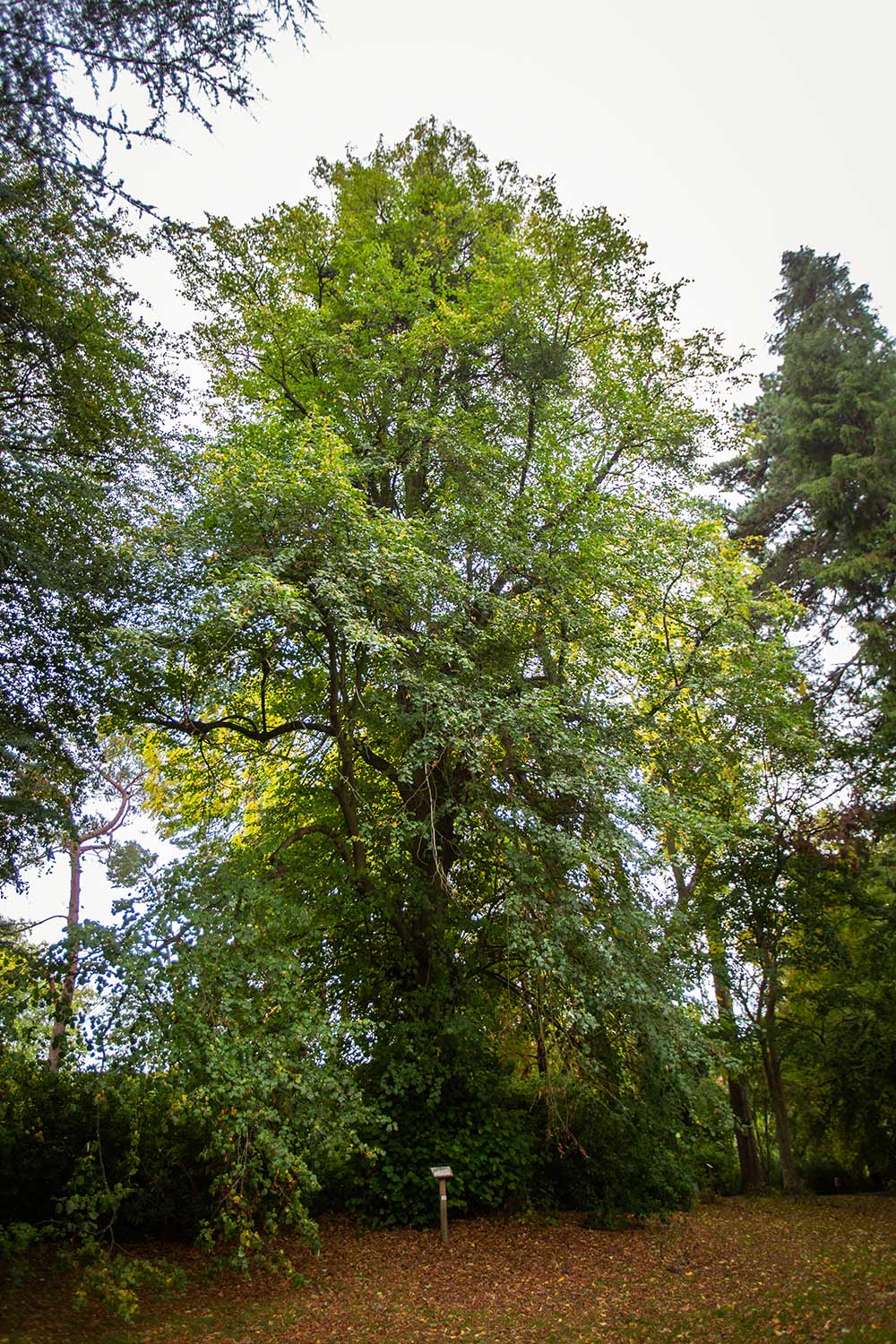
81. Common Lime (Tilia x Europaea)
- Nicknamed the ‘petticoat’
- Measured at 25.69m tall in 2008
- May contain rabbits at play as they love hiding in the epicormic growth at the bottom
- Aphid droppings under it (Wouldn’t want to park your car underneath!)
- Bees can often be found rolling around the floor under this tree during the summer, as they get drunk on the nectars from the flowers!

81. Common Lime (Tilia x Europaea)
- Nicknamed the ‘petticoat’
- Measured at 25.69m tall in 2008
- May contain rabbits at play as they love hiding in the epicormic growth at the bottom
- Aphid droppings under it (Wouldn’t want to park your car underneath!)
- Bees can often be found rolling around the floor under this tree during the summer, as they get drunk on the nectars from the flowers!
87. Black Walnut (Juglans Nigra)
- Planted in 1877 by Sir Joseph Hooker on birth of Robert Woodward
- Produces edible walnuts which are much smaller but not as tasty as common walnuts
- The shells of the walnuts used to be used as clothes dye and sometimes, even picking one up stained your hands black for weeks!
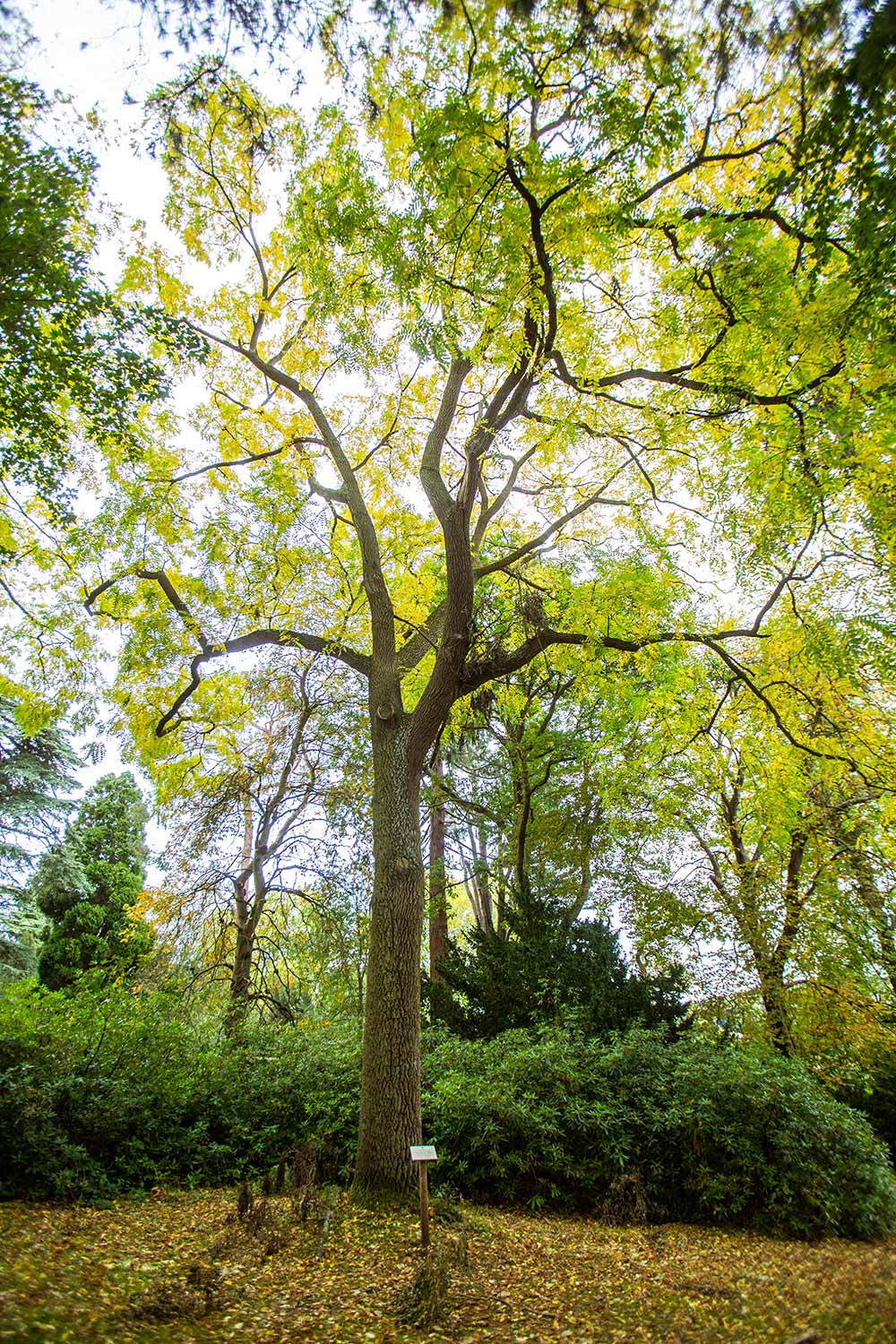

87. Black Walnut (Juglans Nigra)
- Planted in 1877 by Sir Joseph Hooker on birth of Robert Woodward
- Produces edible walnuts which are much smaller but not as tasty as common walnuts
- The shells of the walnuts used to be used as clothes dye and sometimes, even picking one up stained your hands black for weeks!
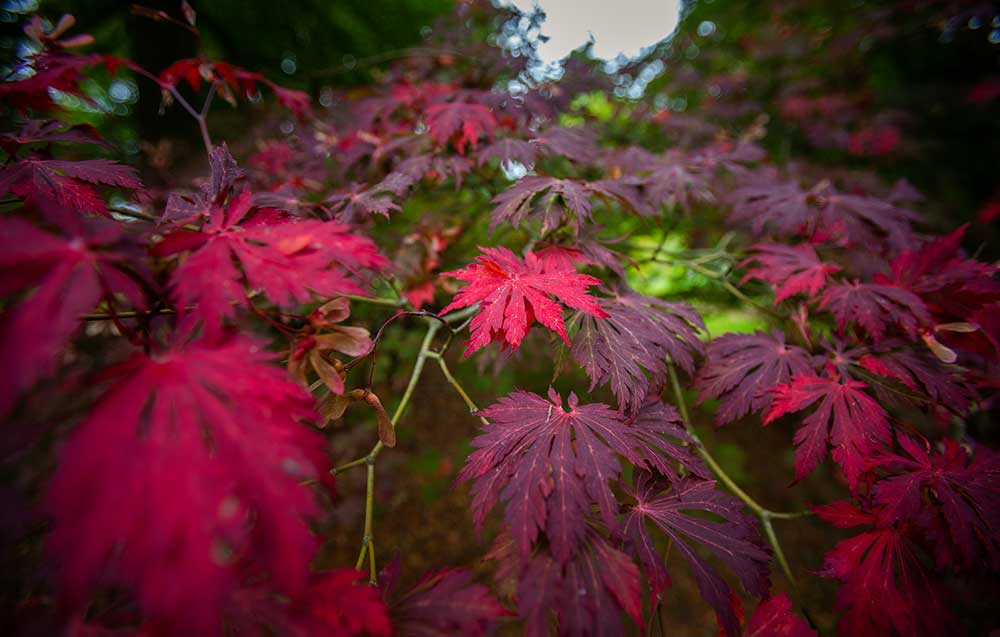
411. Paperbark Maple (Acer Griseum)
- This particular Acer is one of the tallest of its type in the UK
- Beautiful autumn colour and interesting bark all year round
- Measured 13.68m in 2007

411. Paperbark Maple (Acer Griseum)
- This particular Acer is one of the tallest of its type in the UK
- Beautiful autumn colour and interesting bark all year round
- Measured 13.68m in 2007
138. Monkey Puzzle Tree (Araucaria Araucana)
- These trees are now found mainly in South America/Chile but we actually had lots of them in the UK before the ice age!
- Rare in its native country but more and more forests are being planted in South America to harvest this tree for timber, as it has a very pale wood, it grows very straight and very quickly
- It has edible seeds
- Measured at 22.12m in 2007
- Fossilised wood from the Monkey Puzzle Tree has been mined since the Bronze Age but became popular for Jewellery in the Victorian era. It is still do this day mined in Whitby, which is famous for its Whitby Jet jewellery
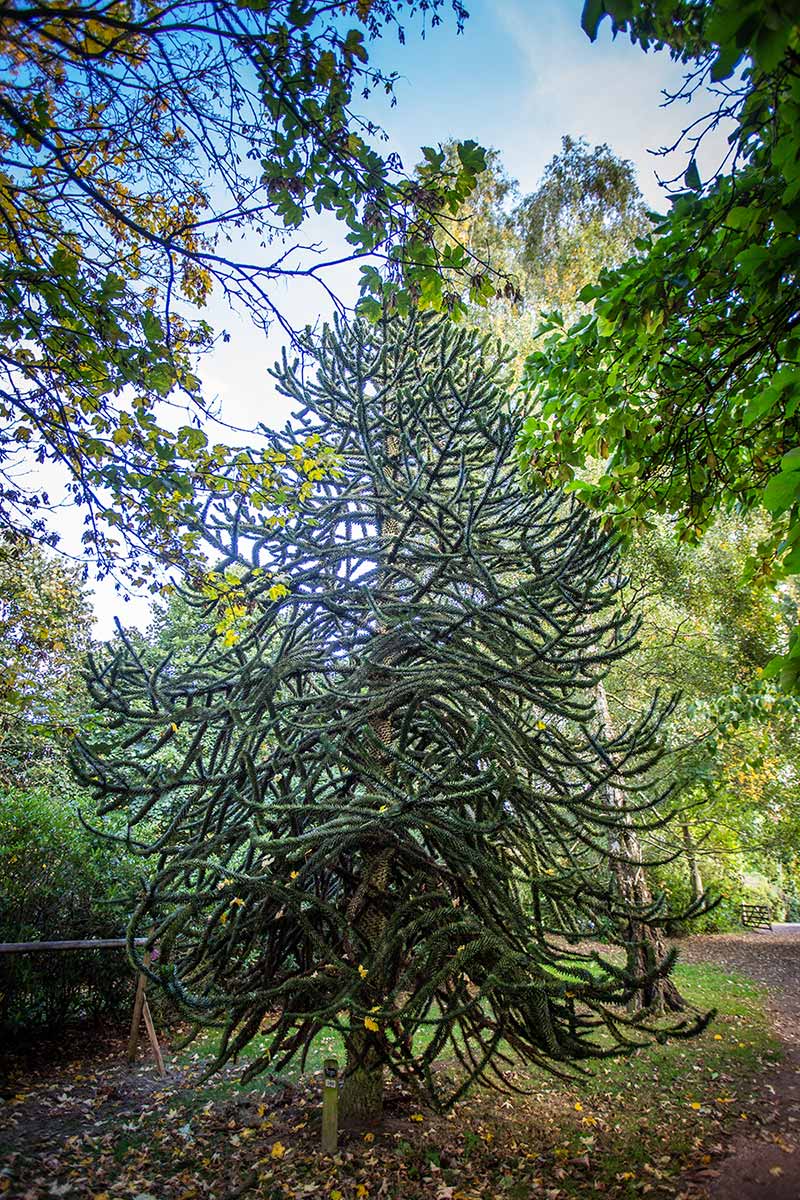

138. Monkey Puzzle Tree (Araucaria Araucana)
- These trees are now found mainly in South America/Chile but we actually had lots of them in the UK before the ice age!
- Rare in its native country but more and more forests are being planted in South America to harvest this tree for timber, as it has a very pale wood, it grows very straight and very quickly
- It has edible seeds
- Measured at 22.12m in 2007
- Fossilised wood from the Monkey Puzzle Tree has been mined since the Bronze Age but became popular for Jewellery in the Victorian era. It is still do this day mined in Whitby, which is famous for its Whitby Jet jewellery
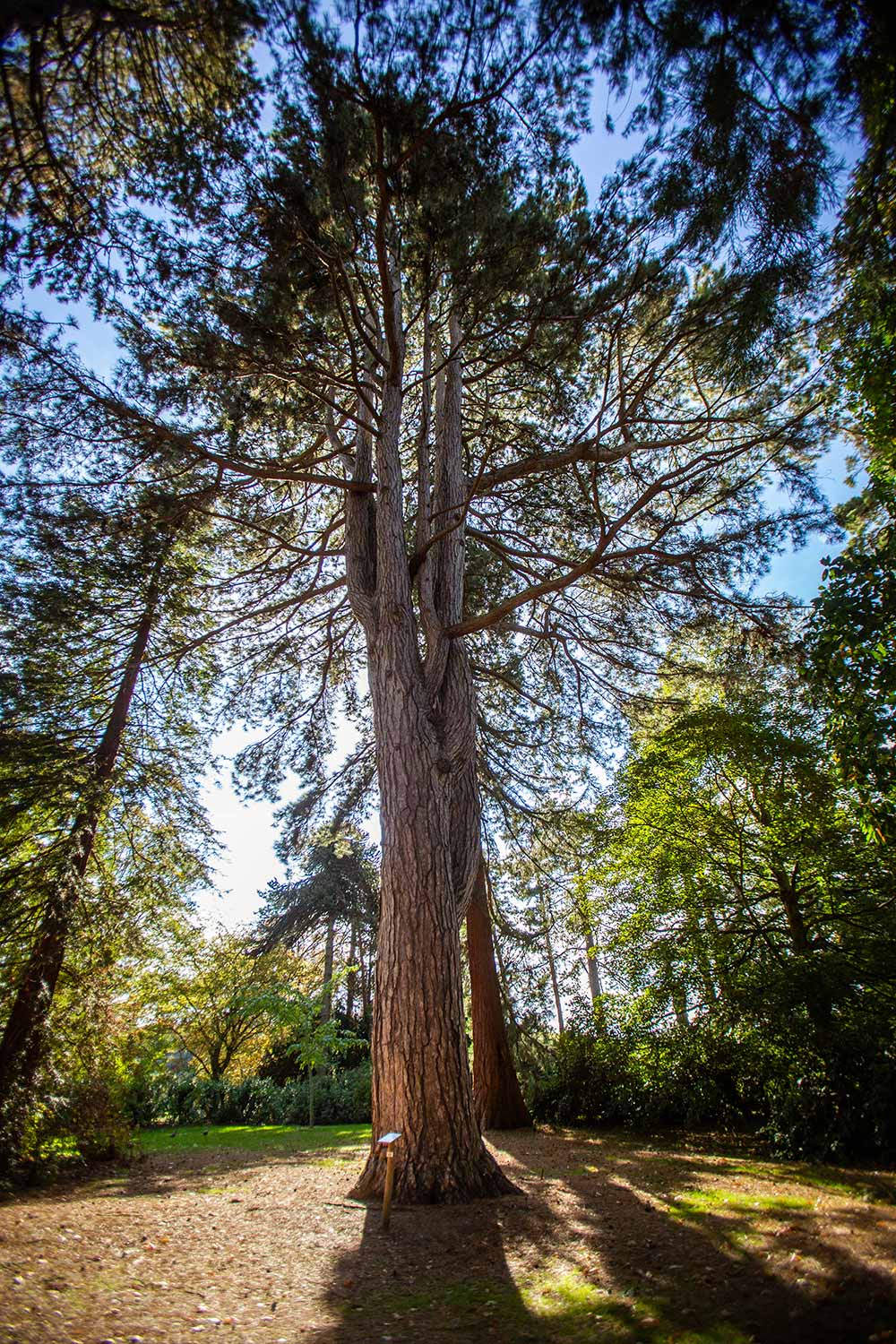
162. Crimean Pine (Pinus Nigra Pallasiana) (Caramanica)
- The unique shape of the Crimean Pine is often described as ‘organ pipes’. The branches grow vertically and look like a tree coming off another tree!
- This particular tree has possibly the biggest girth of this type of tree in the UK (2007 measurements)
- Best grown in Scotland because of the weather
- Insects and bats love the bark which has deep crevices
- 30m+ in 2007

162. Crimean Pine (Pinus Nigra Pallasiana) (Caramanica)
- The unique shape of the Crimean Pine is often described as ‘organ pipes’. The branches grow vertically and look like a tree coming off another tree!
- This particular tree has possibly the biggest girth of this type of tree in the UK (2007 measurements)
- Best grown in Scotland because of the weather
- Insects and bats love the bark which has deep crevices
- 30m+ in 2007
178. Lucombe Oak (Quercus x Hispanica “Luconbeana”)
- Cross between Turkey Oak and Cork Oak
- The bark looks like cork, but it isn’t
- Semi-Evergreen, so if there is a mild winter, all the leaves stay on
- To maintain this unique tree, it has to have a crown reduction every few years to reduce the weight and keep it healthy
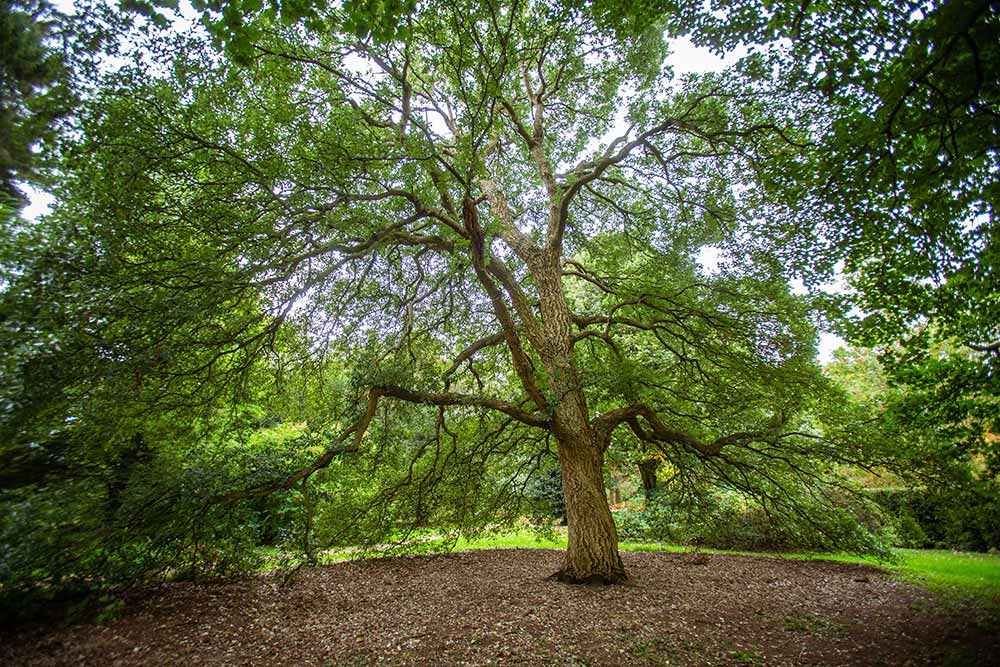

178. Lucombe Oak (Quercus x Hispanica “Luconbeana”)
- Cross between Turkey Oak and Cork Oak
- The bark looks like cork, but it isn’t
- Semi-Evergreen, so if there is a mild winter, all the leaves stay on
- To maintain this unique tree, it has to have a crown reduction every few years to reduce the weight and keep it healthy
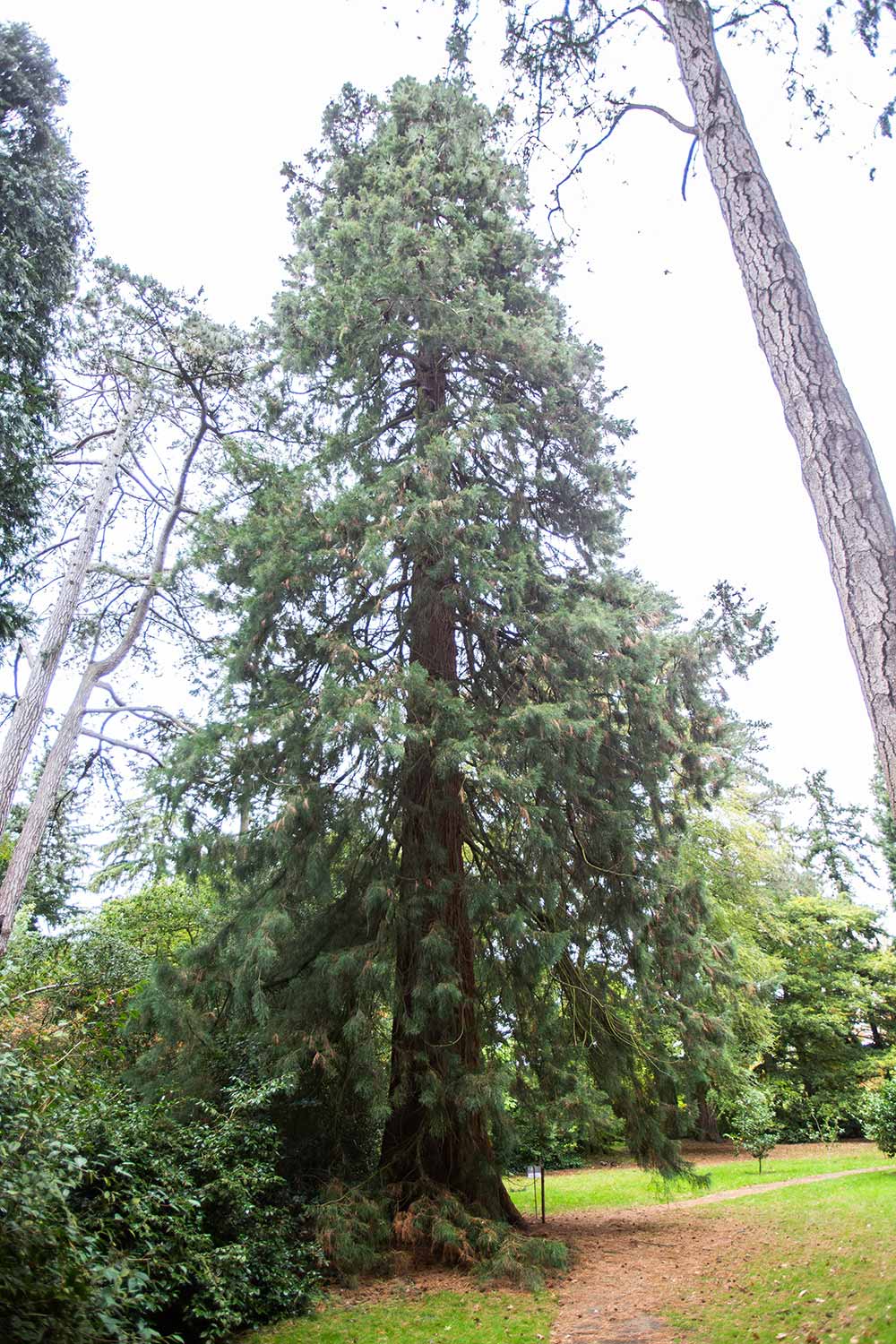
229. Giant Redwood – Wellingtonia (Sequoiadendron Giganteum)
- Measured 38.7m in 2007 making it the tallest tree in the Arboretum
- It has soft, bouncy bark which protects it in forest fires, as the bark does not burn
- This type of tree is the tallest in the world
- Can live past 3000 years
- Named after Sequoia
- Indigenous to North America
- Planted 1860

229. Giant Redwood – Wellingtonia (Sequoiadendron Giganteum)
- Measured 38.7m in 2007 making it the tallest tree in the Arboretum
- It has soft, bouncy bark which protects it in forest fires, as the bark does not burn
- This type of tree is the tallest in the world
- Can live past 3000 years
- Named after Sequoia
- Indigenous to North America
- Planted 1860
262. 3 Corsican Pines (Pinus Nigra Laricio)
- Although these Pines aren’t particularly special individually, they are grouped so closely together it is really rare for these trees to have survived
- It is likely that the 3 trees were planted with the intention of removing the 2 weaker trees after a couple of years and leaving the best one to thrive on it’s own. Somehow, someone forgot about these three, and thankfully they’ve broken all the rules and all 3 have survived and are in fact now among the tallest in the UK – Take that Nature!
- Measured at 35.95m in 2007
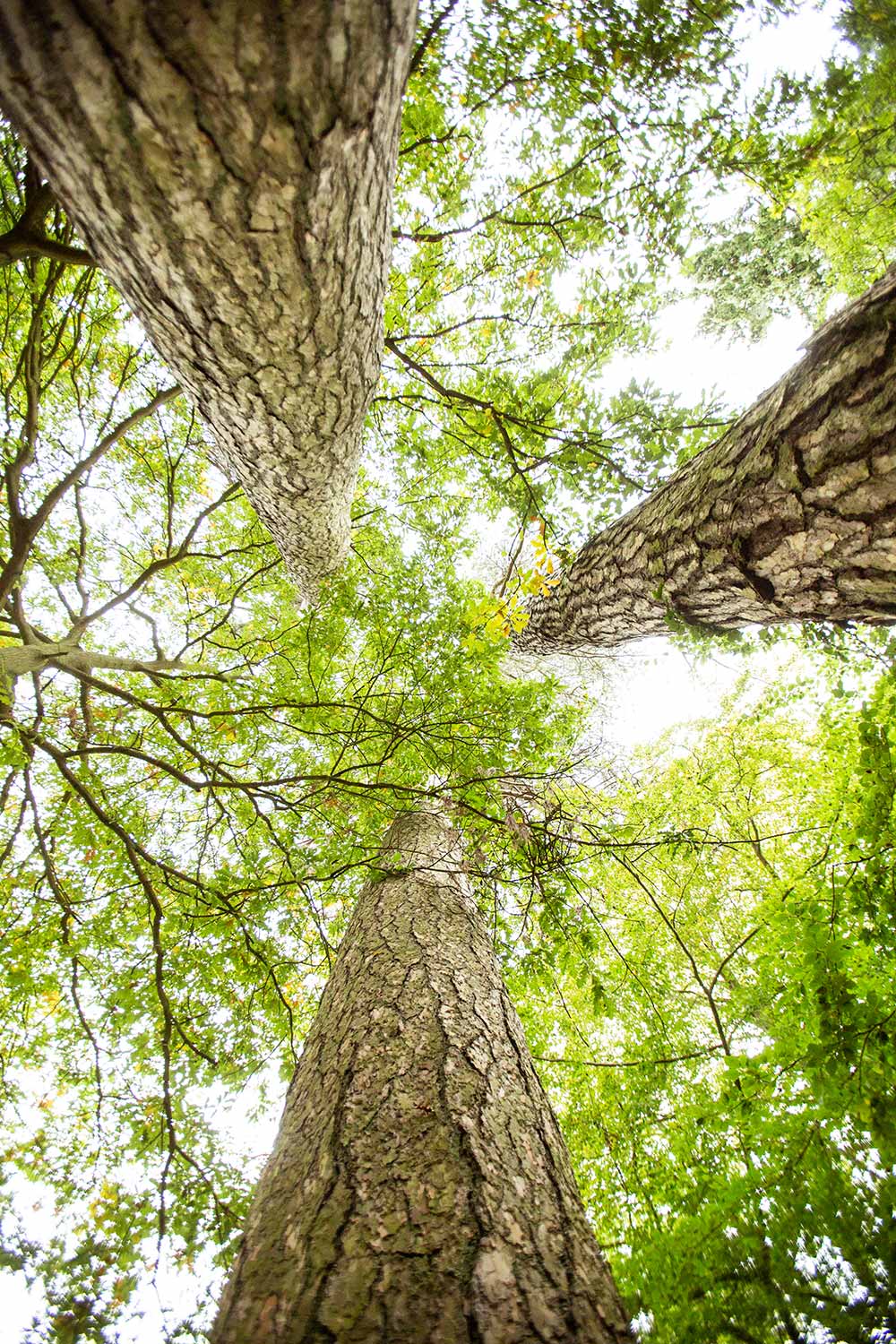

262. 3 Corsican Pines (Pinus Nigra Laricio)
- Although these Pines aren’t particularly special individually, they are grouped so closely together it is really rare for these trees to have survived
- It is likely that the 3 trees were planted with the intention of removing the 2 weaker trees after a couple of years and leaving the best one to thrive on it’s own. Somehow, someone forgot about these three, and thankfully they’ve broken all the rules and all 3 have survived and are in fact now among the tallest in the UK – Take that Nature!
- Measured at 35.95m in 2007
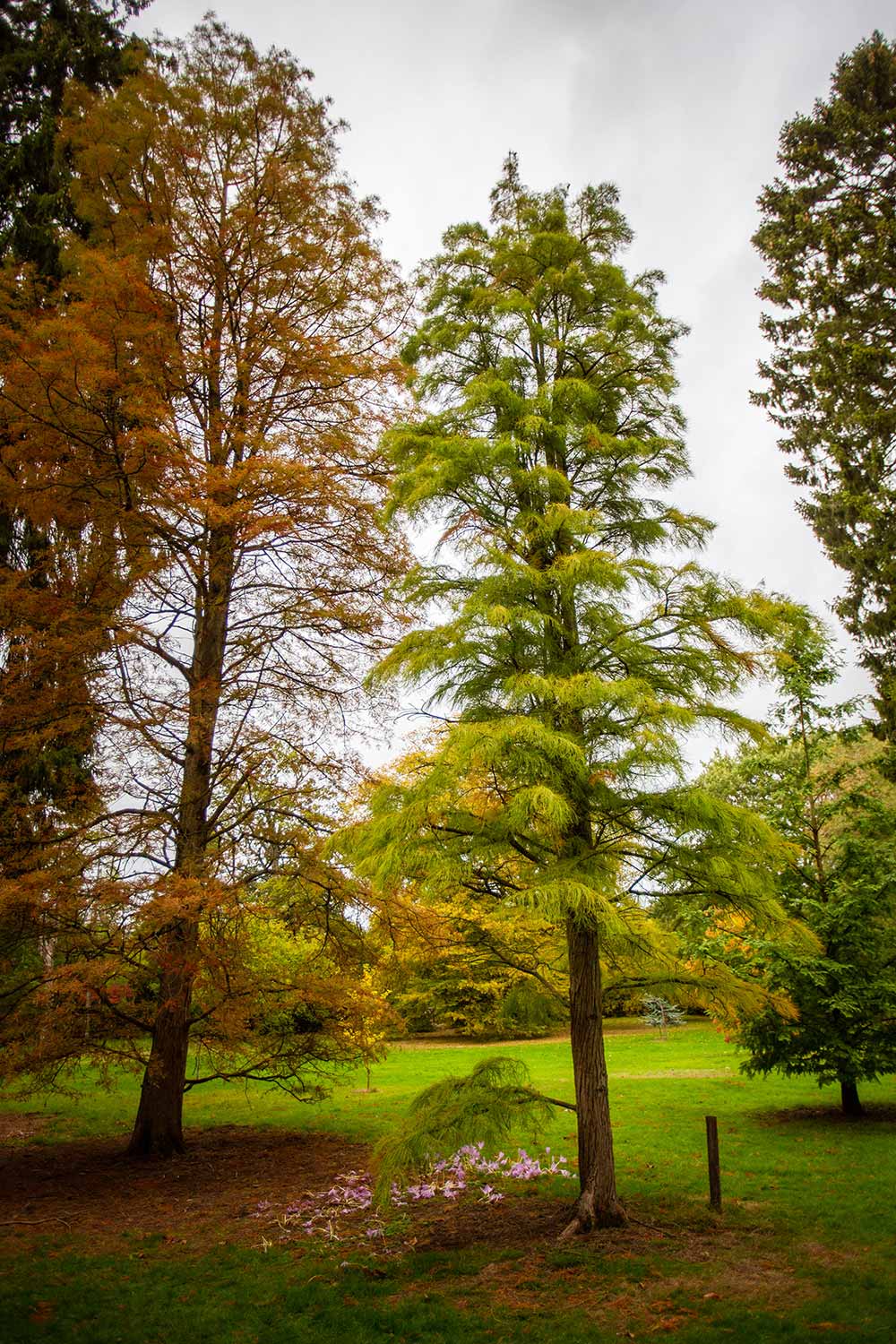
205. Swamp Cypress (Taxodium Distichum)
- Planted in 1960, this is one of the later additions to the arboretum
- These trees are usually found in very wet areas, and can actually be planted directly into water. When they are planted in ponds and lakes, they grow out of the water, and then back in, creating ‘Knees’ so they can get oxygen. (Imagine sitting in the bath, and your knees sticking out – It looks like that!)
- However; our Swamp Cypress was planted in an area of the arboretum that used to be very wet and swampy, but nowadays is much drier, thanks to the trees for soaking up the water – It’s still happy in the newer drier conditions though!

205. Swamp Cypress (Taxodium Distichum)
- Planted in 1960, this is one of the later additions to the arboretum
- These trees are usually found in very wet areas, and can actually be planted directly into water. When they are planted in ponds and lakes, they grow out of the water, and then back in, creating ‘Knees’ so they can get oxygen. (Imagine sitting in the bath, and your knees sticking out – It looks like that!)
- However; our Swamp Cypress was planted in an area of the arboretum that used to be very wet and swampy, but nowadays is much drier, thanks to the trees for soaking up the water – It’s still happy in the newer drier conditions though!
338. Dove or Handkerchief Tree (Davidia Involucrata “Vilmoriniana”)
- This was one of our Head Gardeners favourite tree (The arboretum has many more of them since he worked here!) The Hanky tree, as he called it, reminded him of being a young apprentice gardener, walking past one every day to work and waiting for the beautiful ‘hanky’ flowers to display. He had one of them in his garden at home, and believed that everyone should have one in their garden!
- They have small flowers, but they also produce white bracts, which are a modified leaf, and look like a hanky
- Flowers in early summer
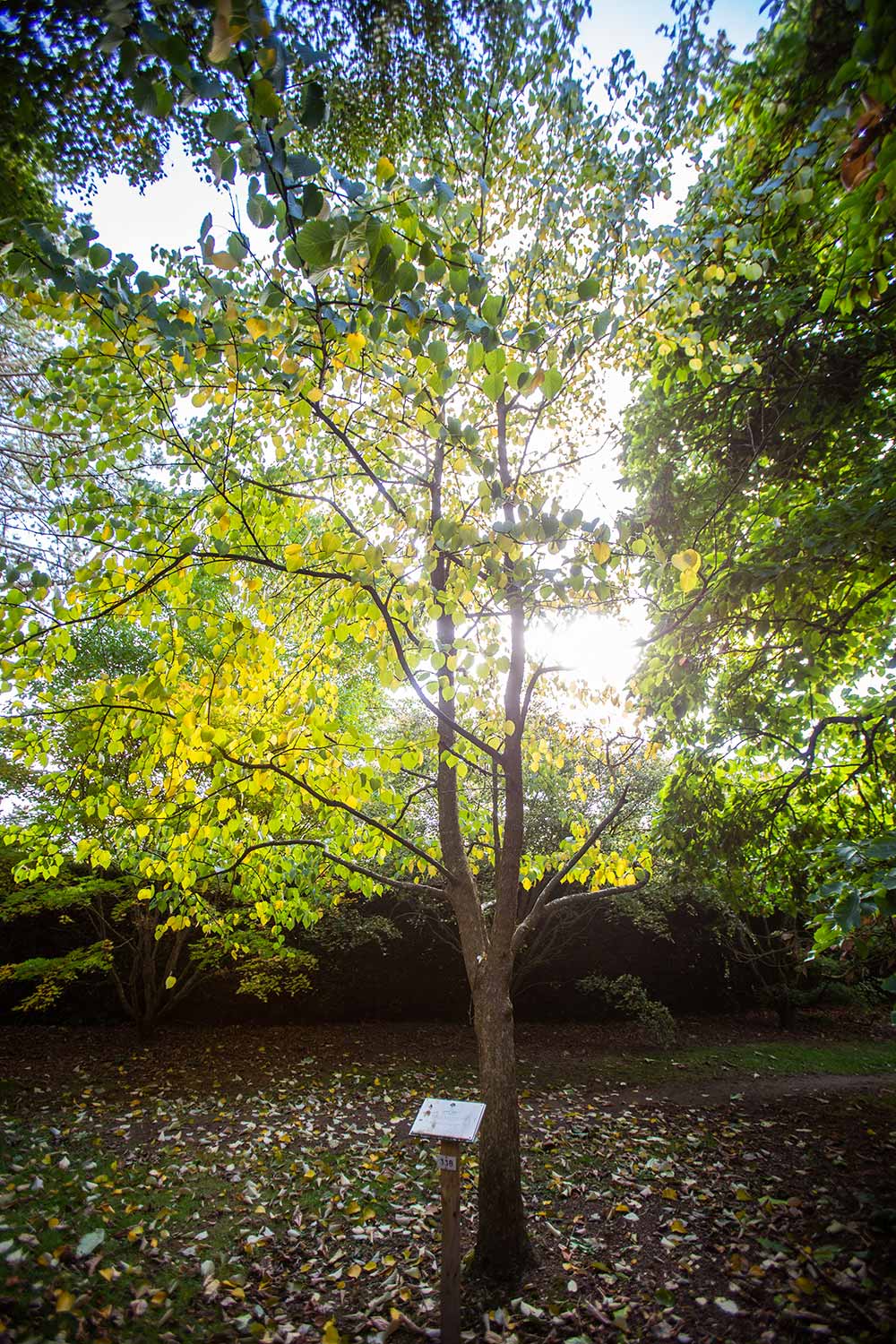

338. Dove or Handkerchief Tree (Davidia Involucrata “Vilmoriniana”)
- This was one of our Head Gardeners favourite tree (The arboretum has many more of them since he worked here!) The Hanky tree, as he called it, reminded him of being a young apprentice gardener, walking past one every day to work and waiting for the beautiful ‘hanky’ flowers to display. He had one of them in his garden at home, and believed that everyone should have one in their garden!
- They have small flowers, but they also produce white bracts, which are a modified leaf, and look like a hanky
- Flowers in early summer
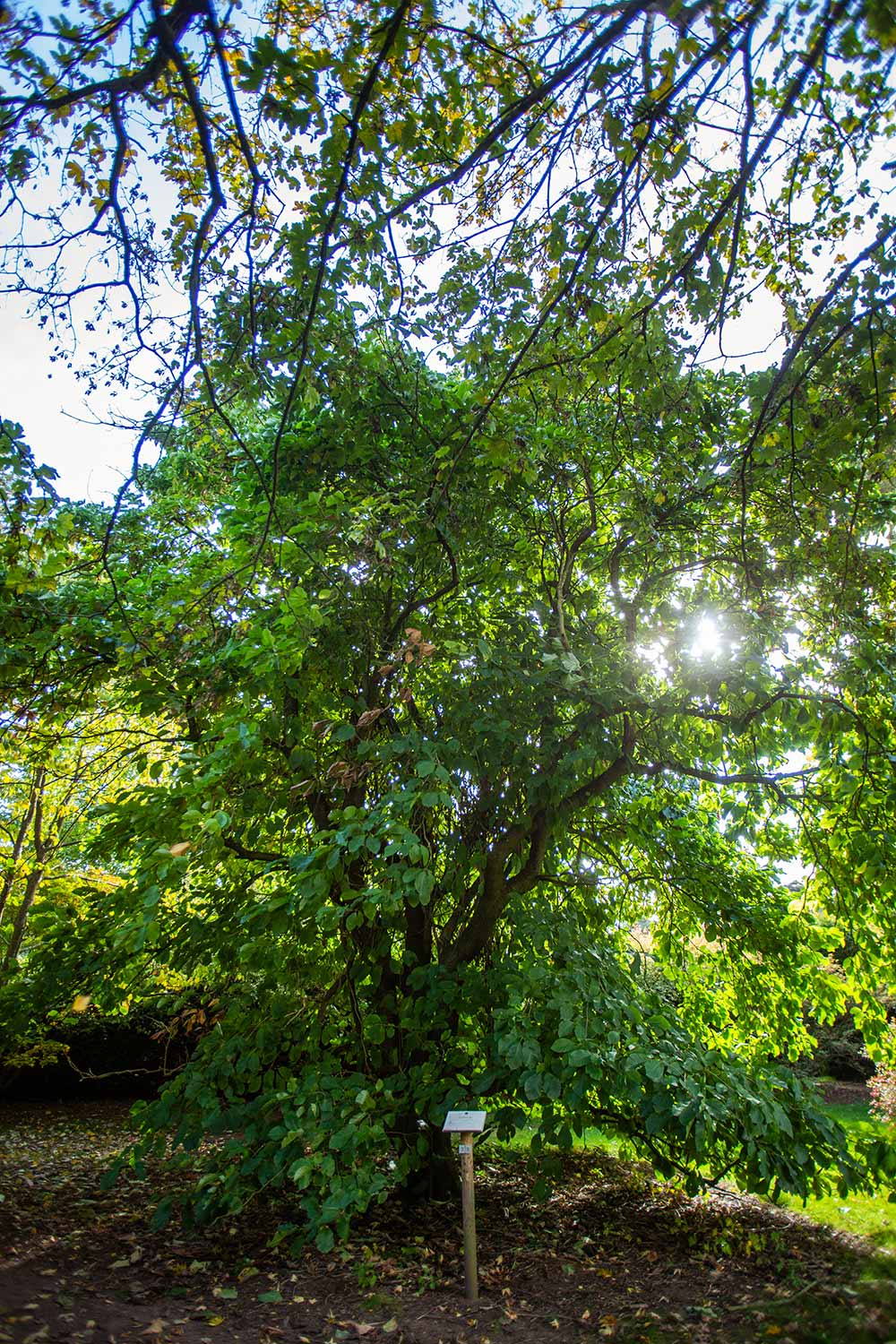
339. Cucumber Tree (Magnolia Acuminata “Koban Dori”)
- The seed heads look like a cucumber/gerkin
- Metallic blue flower with a pale yellow inside
- Flowers around June after all the frosts have gone
- Quite rare for the area – many more in Cornwall and Devon

339. Cucumber Tree (Magnolia Acuminata “Koban Dori”)
- The seed heads look like a cucumber/gerkin
- Metallic blue flower with a pale yellow inside
- Flowers around June after all the frosts have gone
- Quite rare for the area – many more in Cornwall and Devon
Explore the Arboretum
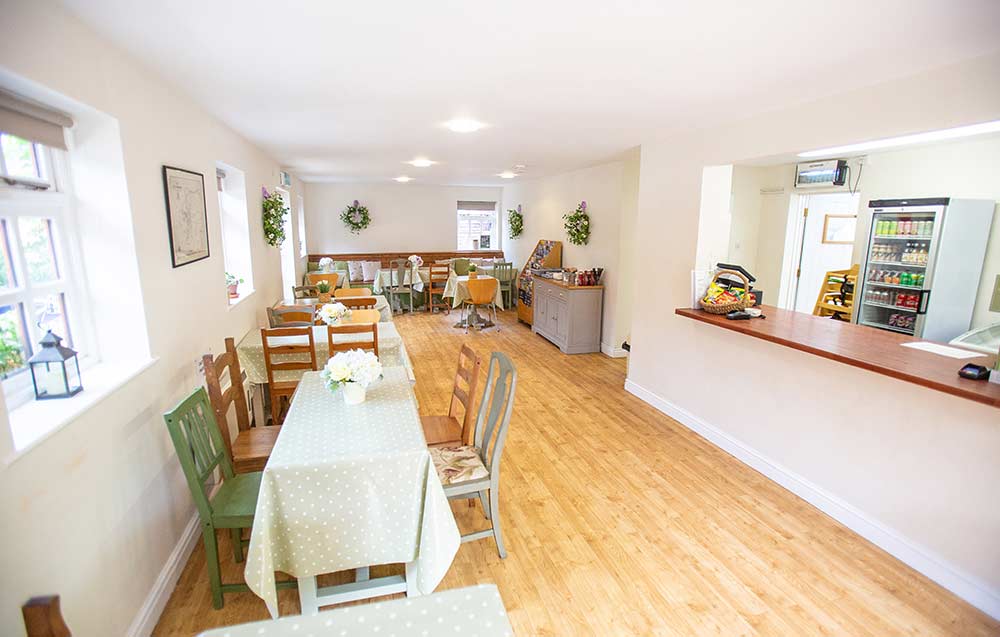
Garden Tea Room
Enjoy freshly prepared food and a well deserved drink in our Garden Tearoom.

Shop
Purchase an Annual Passs and enjoy the stunning seasonal beauty of Arley Arboretum all year round.

Events
With regular events for families and kids, there's always something happening at Arley Arboretum!
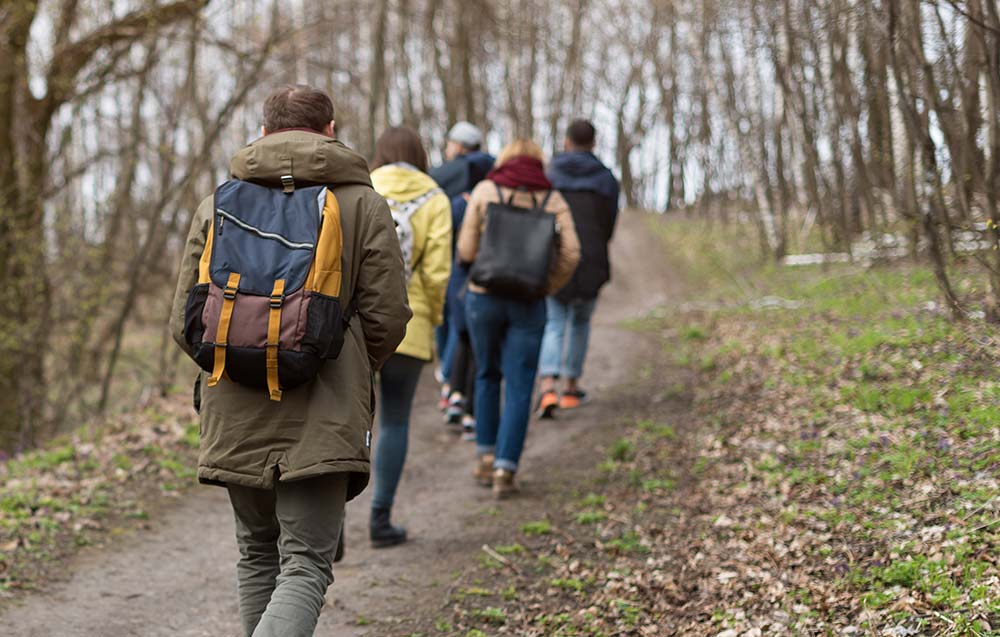
Group Bookings
Share the Arley Arboretum experience by booking as a group.
Contact Us
Get in touch
